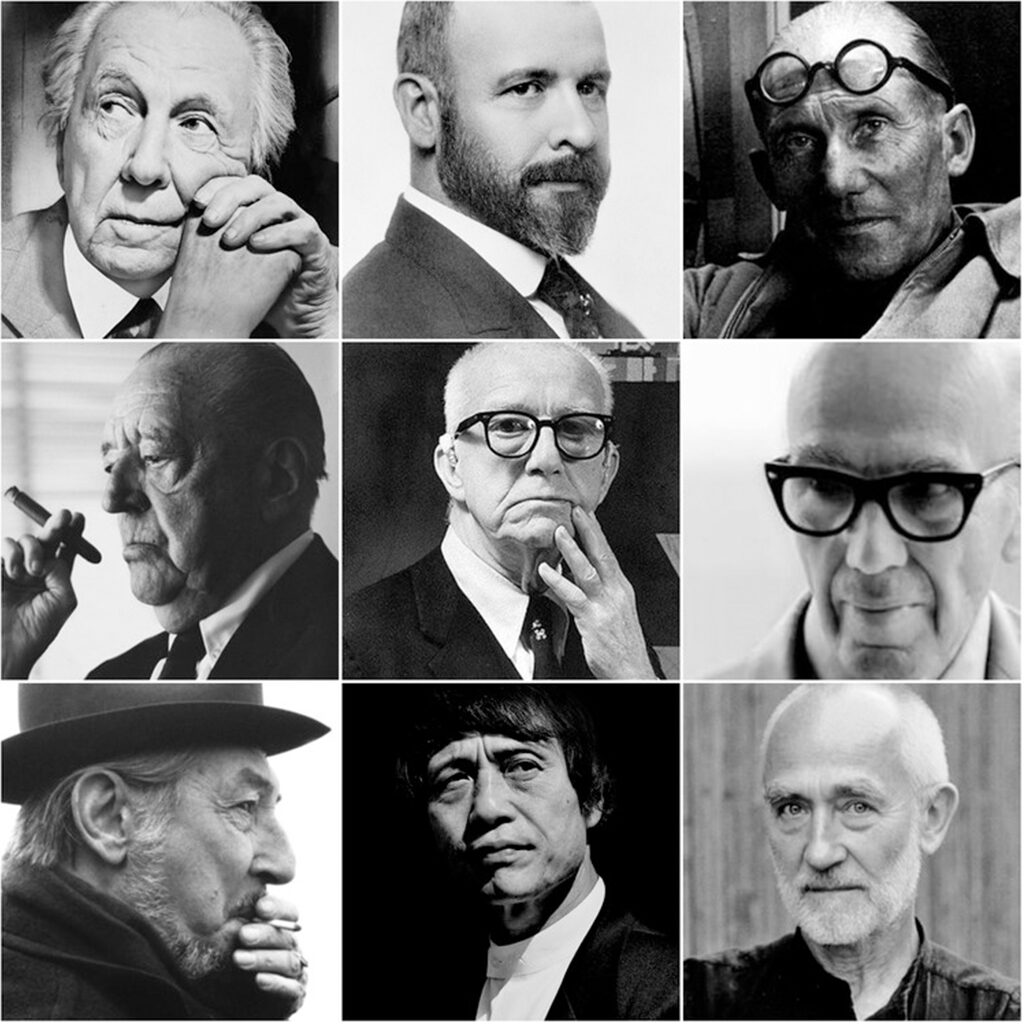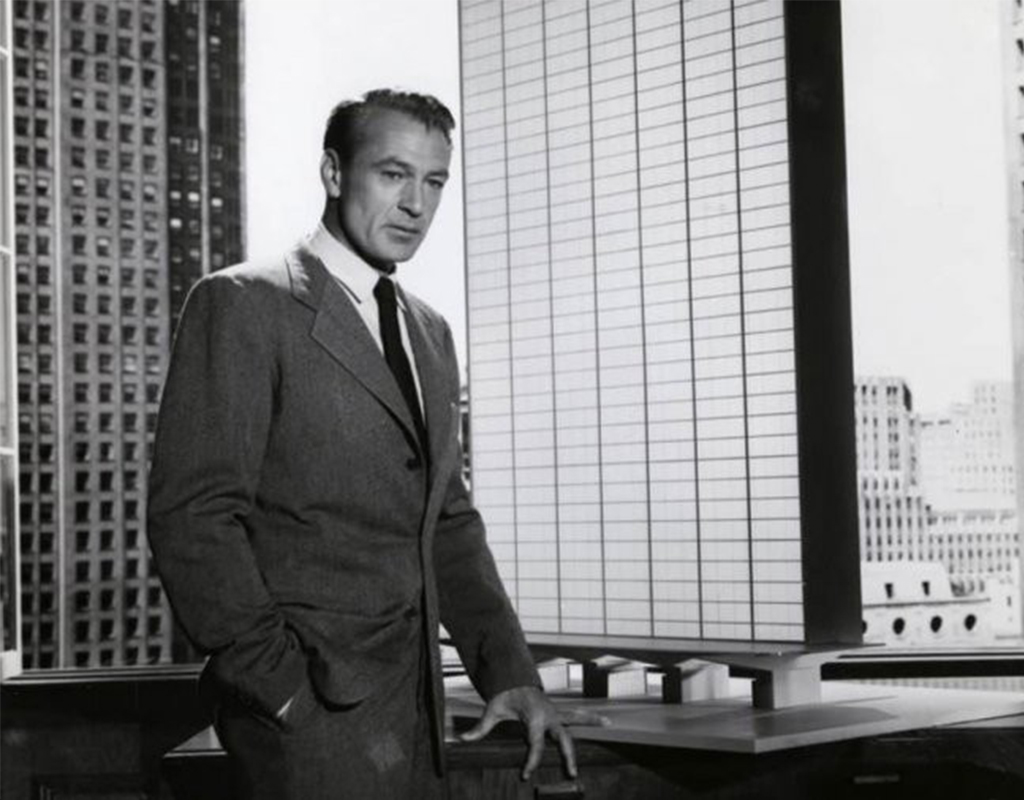If architecture is the materialization of finance, technology, and zeitgeist into the structures that first serve then later represent each era, then what is the proper image of an architect, through whom all these complexities must be filtered?
When one does a Google image search on “Architect” two basic sorts of images result: images of (mostly old and gray) famous architects and images of (mostly middle aged and graying) men representing the architectural profession for advertising purposes. Often pointing to a model or at a drafting table using implements that have been gone from most architectural offices for twenty years. These images reflect more of what society at large thinks what we do rather than our actual day to day work, which is of course less glamorous but much more productive and useful.

That the images are mostly old and male is truer than we would like. Currently 83% of licensed architects are men even though only 54% of graduate architectural students are male. Only 2% of licensed architects are African American although they comprise a far greater percentage of the population.
That the images depict older and graying people is perhaps the truest characteristic of all. The architectural profession, because it requires knowledge of art, science, mathematics, technology and elements of law takes a very long time to properly learn. Four years of undergraduate study, three years of graduate work, and three years of office internship are needed before one can begin to sit for the six licensing exams currently required. For many, passing all the challenging exams can take four or more years to complete. Many people who study architecture fail to become licensed architects, and those who do become licensed often have a gray hair or two.

Many noted and famous architects only started designing buildings independently in their 50’s and do their best work in their 60’s and 70’s. Some, like Frank Lloyd Wright and Philip Johnson, continued to practice their art beyond the age of 100. Architects build a wide variety of skills and philosophy that helps guide them through the complex process of creating a new building. Younger architects these days however have a better grasp of new technologies
Architects traditionally were drawn from the upper classes in that it was a profession that combined broad knowledge of art, history, and proportion. Richard Boyle, Lord Burlington is famous for bringing Palladian architecture to England when he designed Chiswick House, a county estate for himself. Similarly, Thomas Jefferson designed his own Virginia estate, known as Monticello. During the Colonial Era in Newport, Peter Harrison was a well-to-do individual who is famous for designing the Redwood Library, the Brick Market, and Touro Synagogue, among other structures. In the Gilded Age, Richard Morris Hunt and Stanford White are just two of the many noted architects who were of the same social class as their clients. Even into the modern era, The Waves estate was designed by John Russell Pope for himself and three of Frank Lloyd Wright’s most famous houses, Oak Park, Taliesin, and Taliesin West were all designed and built for himself. It is perhaps this tradition that has created an aura around the profession that architects are impractical, aloof, and focused solely on aesthetics. I would say this is far more rare today, if it was ever really true before.

Perhaps there exists no greater mythologizing around the profession of architecture than Ayn Rand’s The Fountainhead. It is the story of Howard Roark, a solitary genius who fights social conformity to a tired and traditional model of design in a society that does not and cannot understand his vision for a bold, minimalistic design aesthetic. It feeds the internal stereotype of architects who feel underappreciated and misunderstood and also the societal misinterpretation of architects as self-aggrandizing artist types who are difficult and selfish to work with.
The reality is the architects are like most professionals in that they are intent on bringing integrity to their projects and fair value to their clients. We architects are given the challenge of fitting program to form, meeting the complexities of code and zoning, and dealing with the limitations of budgets that are invariably smaller than the aspirations of the client. We do all this to create a building that will fit into and add positively to the community of structures in which it is placed. It is at times both frustrating and inspirational, disappointing and yet also fulfilling.
Since architects are the means by which architecture is created, we as a profession must work to model the best of the society of which we are a part. We must work to save the environment by saving our clients’ money on heating, cooling, and maintaining their buildings. And we must work to encourage the talents of women, minorities, and others so that the profession more closely matches to demographics of the broader culture. Hopefully the image of the architect will continue to evolve until the profession is seen as the best reflection of the culture that needs them to solve their problems of building and living in a complex and quickly changing world.
Join the Architectural Forum to stay up-to-date with architectural news from Rhode Island and abroad.

Thanks Ross, I don’t think many architects would be writing about architects so it’s a worthwhile look in the mirror. The fact one has to create trust in a client maybe explains some of the social similarities. Maybe you’re living just beyond the cusp of the transition from interested, artist with connections and vitality to energy system and legal engineer of the postmodern world. Either way I hope your creativity keeps up till you are 100. and remember in the words of george Burns, “if you can make it to 100 you’ve made it, because very few people die over the age of 100.”